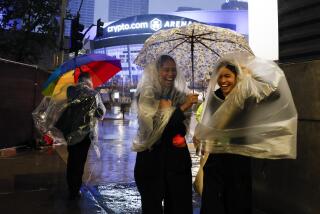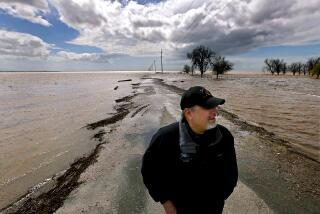Statewide snowpack at half of normal levels
With the statewide snowpack at only 52% of the norm for this time of year, state and federal water managers are expecting below-normal spring runoff and falling reservoir levels.
The last three months in California have been the driest of any January-through-March period on record, going back to 1895.
It has been a winter of extremes in the state, beginning with an unusually wet November and December and ending with a string of parched months.
âItâs like Dr. Jekyll and Mr. Hyde -- the changes weâve had,â said climatologist Kelly Redmond of the Western Regional Climate Center.
Storage in the stateâs two largest reservoirs, Shasta Lake and Lake Oroville, is a bit above normal for the date, thanks to the big storms in the Northern Sierra that turned the final three months of last year into the 10th-wettest on record for that region.
But that cushion is expected to disappear in the coming months. Although no one is declaring drought, the state last week cut projected water deliveries to Southern California. And farmers on the west side of the San Joaquin Valley may get only a fifth of the federal irrigation supplies they have contracts for.
The delivery cutbacks have underscored problems with getting supplies through the Sacramento-San Joaquin River Delta, the perennial bottleneck in north-to-south water shipments.
Water officials say protections for the imperiled delta smelt severely restricted delta pumping when the early winter storms were pouring water into the system.
Had a controversial diversion system proposed by Gov. Jerry Brownâs administration been in place, they say, the big government water projects could have shipped a lot more water south to the San Joaquin Valley and Southern California.
ALSO:
Perry backs Garcetti to âtake a standâ against special interests
Kidnapped 10-year-old girl was sexually assaulted, sources say
Valley fever cases jump in California and other southwestern states
More to Read
Sign up for Essential California
The most important California stories and recommendations in your inbox every morning.
You may occasionally receive promotional content from the Los Angeles Times.











